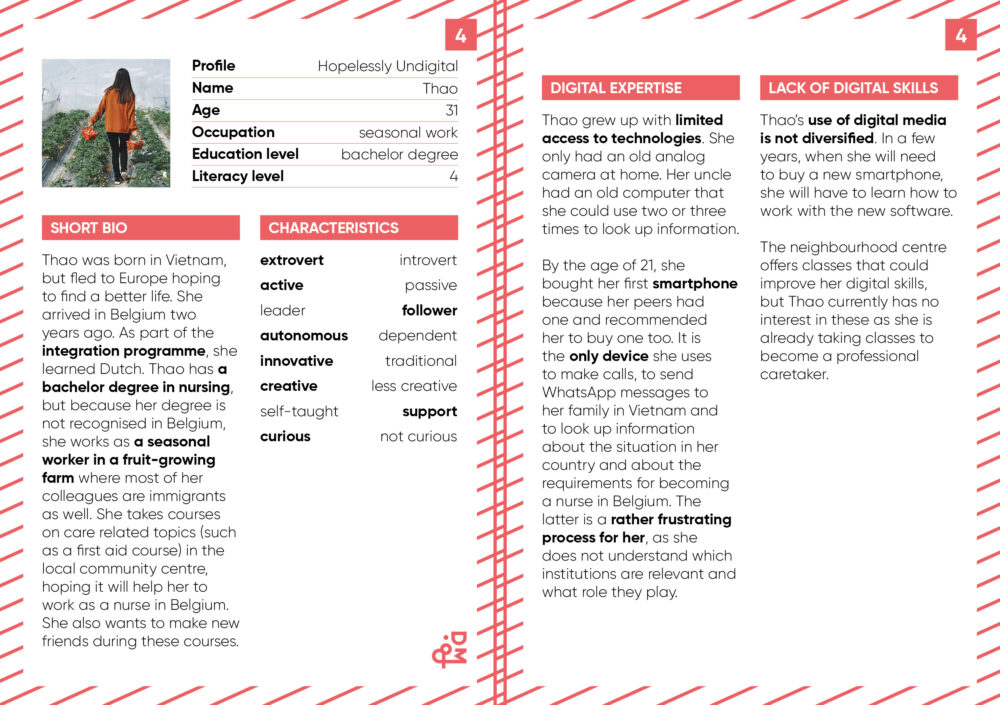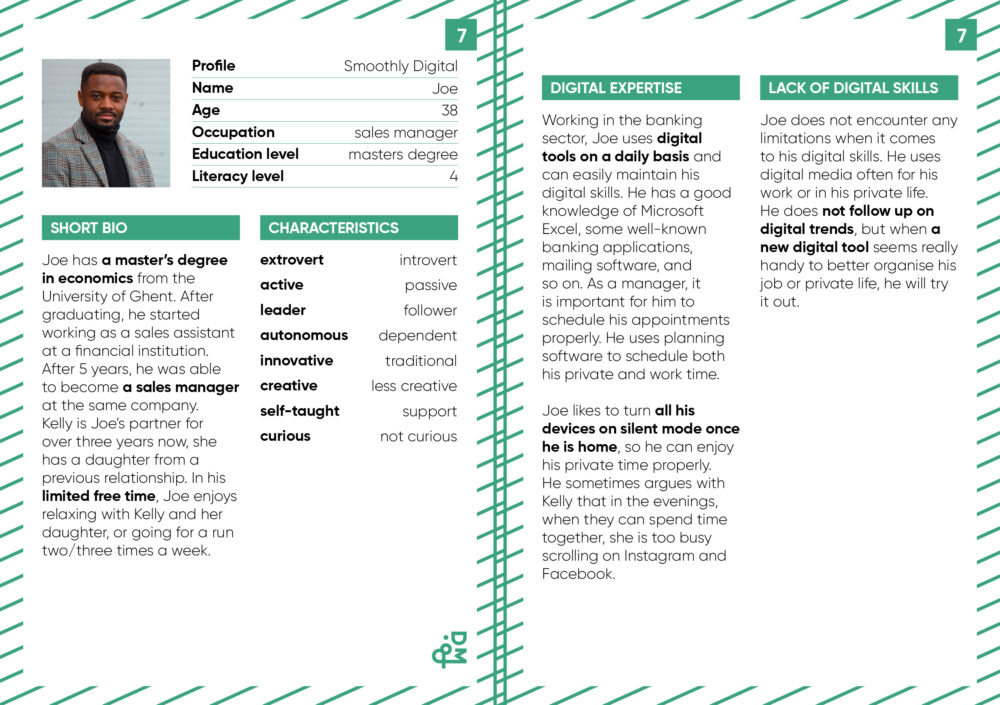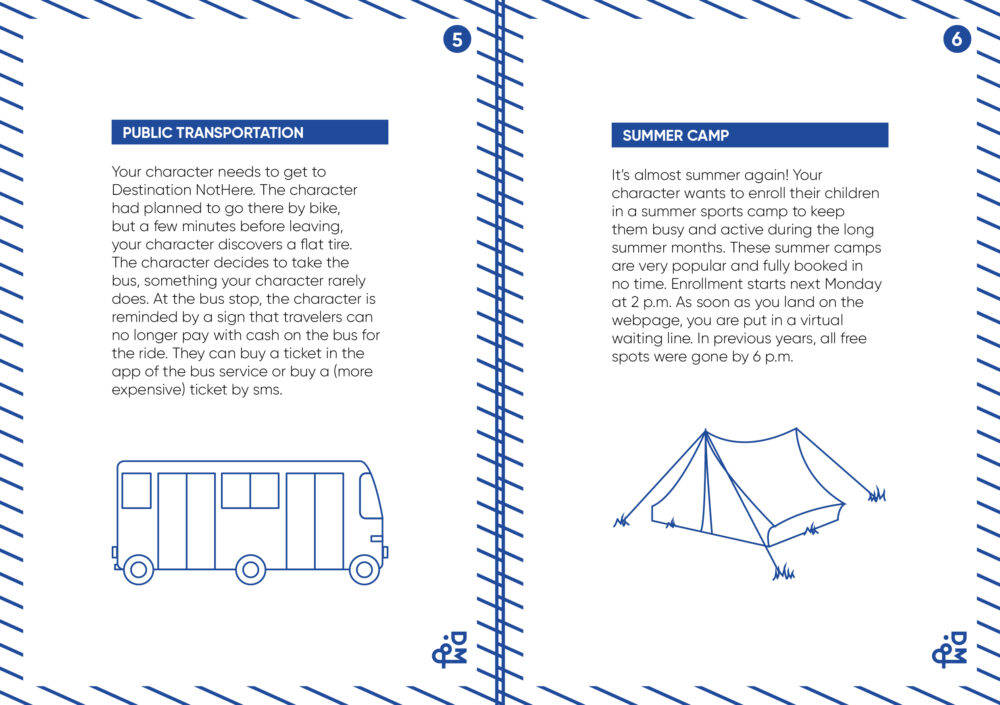Digital Inclusion card game
How can you make your digital services more accessible and user-friendly? Which digital and social barriers do people face that make it difficult to use digital technologies? How do you deal with this and what solutions can you offer to overcome these barriers?
The Knowledge Centre Data & Society developed a role-play for organisations, companies and governments who want to know more about digital exclusion mechanisms or who want to test their digital services against a set of characters (persona) who each experience their own specific thresholds. To do this, you put yourself in the shoes of a character so that you can experience these stumbling blocks yourself and therefore know better how to solve them, as well as the thresholds of others. In this way, you can make your digital service even more accessible and pleasant for everyone. Win-win!
What you should know before reading further
- Target group: business, policy, and civil society organisations
- Project phase: problem analysis/ideation, model design, development, implementation, evaluation/iteration
- System component: entire application and users
- Price: freely available
- Language: English
What does the game consist of?
The card set consists of 4 types of cards:
The character cards describe 20 different profiles, each with their own story and barriers to digital technologies. Each character card includes:
- Sociodemographic background;
- Short biography;
- Experiences and barriers of using digital technologies;
- The corresponding profile (cf. 8 Profiles of Digital Inequalities).
The trajectory cards are used to fill in the steps your character has to take to complete the scenario on the situation card. Also, think about the social and digital barriers your character faces and write these down on the journey map as well.
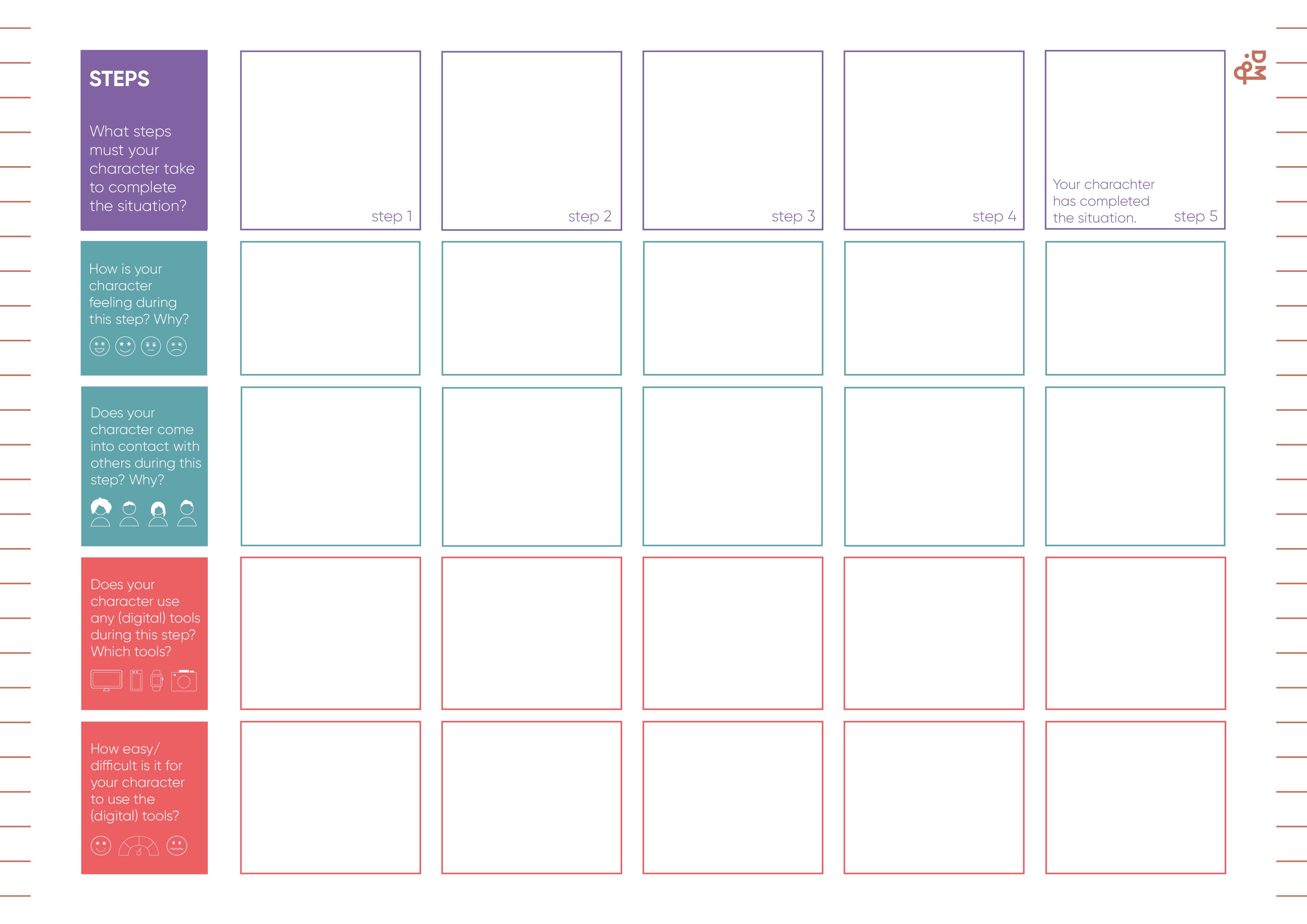
You can write down your solution to a specific threshold on the solution cards.
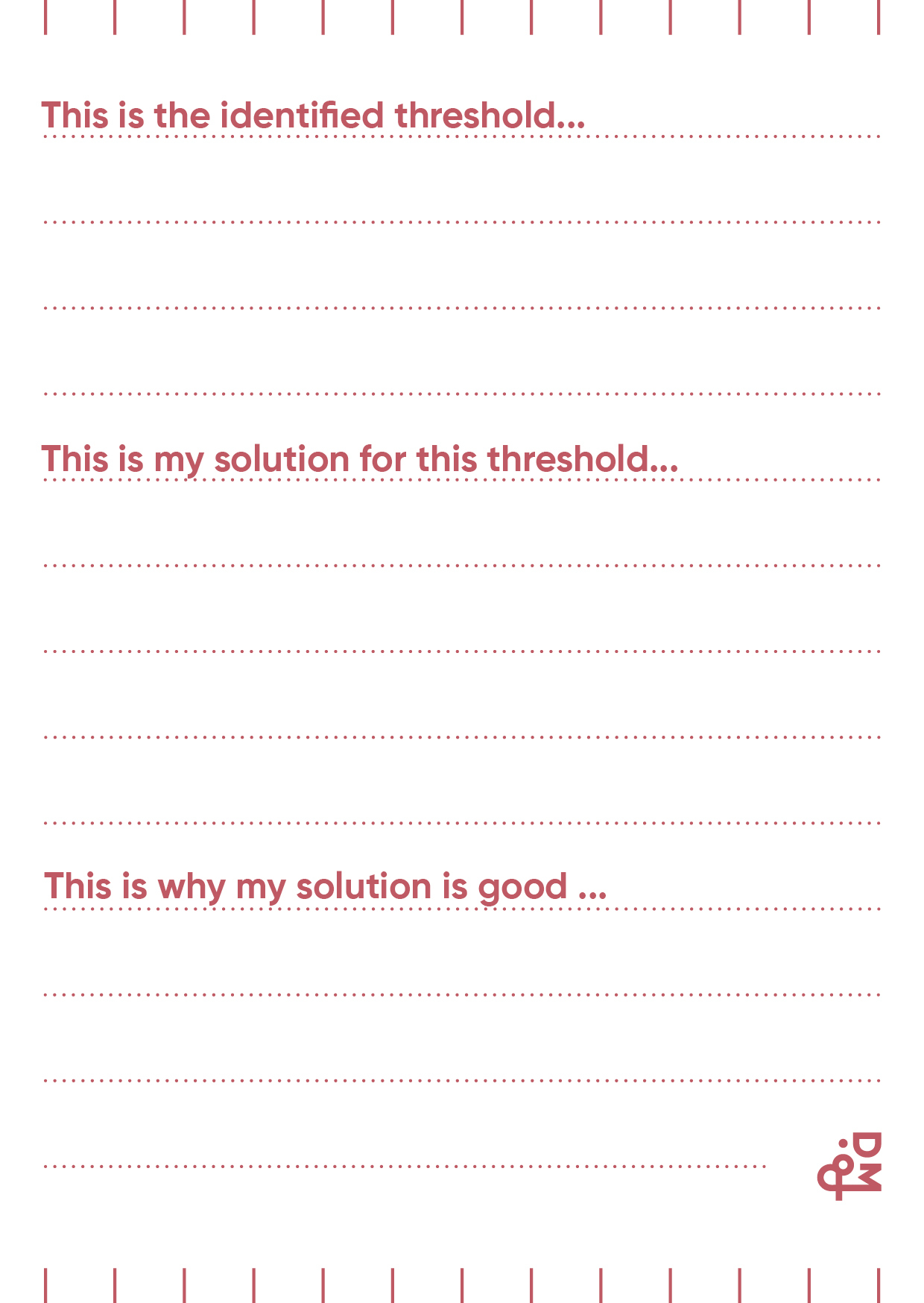
How to play the game?
Below is a step-by-step explanation of how the card game is played. Have fun playing!
Before the game begins:
- Each player draws a character card and takes the corresponding Profile of Digital Inequalities card. Each also chooses a situation card and takes a blank route card.
- The blank solution cards are placed in the middle of the table so that all players can easily reach them.
- Each player takes time to read the information on the drawn cards and briefly explains his/her character, profile, and situation to the other players.
The game:
- Each player fills in (independently) the trajectory card for his/her character, profile, and situation. You first describe the steps your character must go through to overcome the chosen situation. You fill in these steps in the first row of the template. When you have described the steps, you give an answer to the questions formulated in the first column of the route map for each step.
- After filling in the trajectory cards, each player chooses the two most important thresholds for their character and draws a circle around them. All players briefly tell the group their two most important thresholds.
- The players take blank solution cards and think of a solution for the two identified thresholds of each character. Always think of solutions from within the character: how can this character overcome this threshold?
- Each character is examined in groups for solutions. The holder of the character card chooses the best solution. So per character, you identify two good solutions, one for the first threshold and a second solution for the other threshold.
- The player whose solution is chosen wins and receives the solution cards that did not make it. Each solution card represents one point.
- Repeat steps 3 to 5 until solutions have been found for each threshold of all characters.
End of the game:
- All players count the solution cards they have won during the game. The player with the most cards wins the game. Congratulations!
TIP: You can play the game with the situation cards, but would you rather work around one of your (digital) services? Then add your own situation card.
Downloads
Download the complete deck of cards, including 20 character cards, 20 situation cards, 1 blank route card and 1 blank solution card, and get to work with it in your team. Have fun!
The card game is based on research by Dorien Baelden and Ilse
Mariën (research centre imec-SMIT, Vrije Universiteit Brussel), which
translated into the '8 Profiles of Digital Inequalities'.
These profiles describe the diverse use of technologies among groups in
society. They were developed to help governments and organisations
reflect on the services they offer and also as a source of inspiration
for developing digital inclusion strategies and policies. Click here for
more information about the research and the profiles.
The card game was developed by the Knowledge Centre Data & Society. The Knowledge Centre mediawijs translated the original card game into Dutch.
